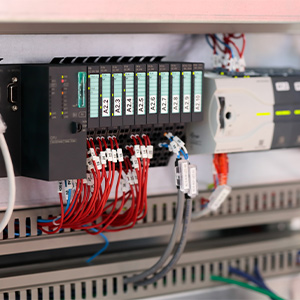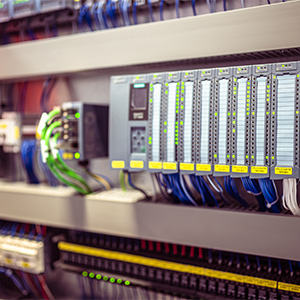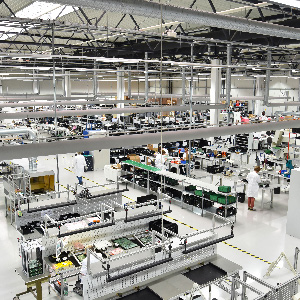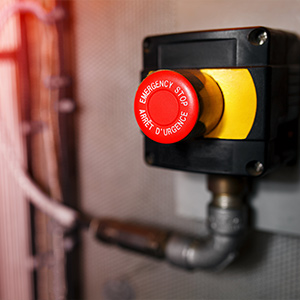Although things have settled down a bit over the past year, 2021 saw a rapid pace of innovation and change. The global pandemic has greatly affected the way we work, and particularly how we can continue to work while not physically present. To this end, we've seen advanced machinery and smart systems being deployed to evolve new working patterns and usher in new industrial automation trends.
The main focus of developments in industrial automation is centred around the capabilities of advanced technology, together with our concerns for cybersecurity and the environment. In our view, the following 2022 automation trends will top the list:
1. More Advanced Uses of IIoT - Condition Monitoring
The IIoT (Industrial Internet of Things) enables various enhanced engineering strategies such as root cause analysis, predictive maintenance (PM), big data analytics and condition monitoring (CM). Industry experts are registering a definite swing in machine builders towards CM, as they start to understand how it works and what major benefits it can deliver.
CM covers a machine's particular conditions, such as temperature and vibration, using an array of IIoT sensors. These immediately identify any operational changes that might indicate a fault developing, and transmit system alerts and/or remedial action. It's very useful in things like motors, presses, pumps and compressors, and the range of parameters that can be monitored is constantly expanding. Real-time CM data analysis can also extend to wider performance analysis, such as machine usage, cycles and running hours.
2. Predictive Maintenance
CM is a major factor in PM, as it allows repair programmes to be scheduled in advance, abnormalities to be recognised, and preventative actions taken. With so many sensors being integrated into automated manufacturing, machines are also able to assess their own status. This means that instant feedback will lead automatically to a request for machine maintenance before the problem gets to a critical state. This results in reduced machine downtime and cost savings. In some circumstances, it's even possible that the machines could carry out their own maintenance, and there are examples of this already in practice.
3. Big Data and Reporting
More advanced IIoT technologies mean the production of a great deal more data, collected constantly and in real time. This will continue as one of the leading 2022 automation trends, as companies learn how to exploit its full potential. Big data reflects every input and action of the automated production process, which can then be studied, or stored for later analysis. Data analysts can find flaws in a process, loopholes in procedure and assess the total life cycle of their equipment.
Big data allows businesses to see exactly what is happening in their company on a minute-by-minute basis. They can then produce better planning and forecast models, which will, in turn, improve productivity and profits. In some cases, larger companies can aggregate the data from multiple production facilities to derive a more comprehensive picture of their operations. These processes can be further enhanced by artificial intelligence (AI) and machine learning (ML).
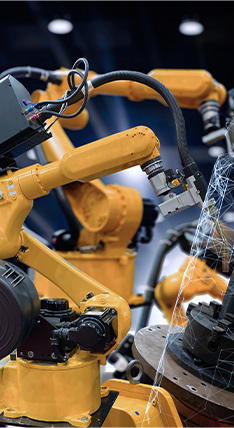
4. AI, AR, VR & ML
AI enables machines and equipment to make independent decisions and carry out smart tasks. ML takes this a step further by giving machines the ability to learn from their own activities to improve themselves, especially as algorithms become more sophisticated. It's already possible to run a production facility without any human input, in what is known as a lights-out or dark factory, but this is not suitable for all industries.
In time, manufacturers will be using more augmented and virtual reality (AR/VR) applications. Combining these technologies with IIoT and AI offers great potential in many areas. These include product design and development, manufacturing, field service & machine maintenance, and customer support & logistics. Using AR in the early stages of product development, for instance, allows virtual iteration of product designs without incurring repeated prototyping costs.
As products become more complex, their components often increase in number and decrease in size. This makes the manufacturing process for workers more difficult and tedious if they are to perform error-free tasks rapidly. Some complex assembly processes are now assisted by AR-guided interactive work instructions, to speed them up and eliminate errors without putting more pressure on workers.
Field service technicians also use AR and/or VR to carry out guided repairs remotely, keeping employees safer and saving time and money for the company. Real-time daily CM can also be carried out with AR, replacing periodic machine maintenance and reducing breakdown losses. It can contribute towards PM by performing rapid diagnostics, as well as enabling faster repair and recovery. AR can also improve logistics by using assistive and interactive voice-over to provide guided instructions.
5. Sustainability
Resource efficiency and net-zero emissions are our foremost global concerns, so it's imperative that business operations are managed in an environmentally responsible and sustainable manner. Energy and materials costs continue to rise, regulations get stricter, and 2022 automation will trend towards greater sustainability and renewable energies. IIoT technologies can help develop solutions to reduce energy consumption, creating more efficient machinery and reducing waste. Recycling of parts is also a growing trend in industrial automation, together with the Right to Repair legislation being demanded by consumers.
6. Cybersecurity
With the advance of IIoT and greater connectivity, there is a corresponding reliance on complex software. This makes it attractive to cybercriminals, who cause great damage by hacking industrial systems, spear-phishing or installing ransomware. In some of the worst recorded cases, whole factories are taken down and all their business and personnel data stolen. The rise in threats and the very real expense of a breach have led machine builders to incorporate more stringent cybersecurity measures. Companies are improving employee training and offering full disclosure with customers and suppliers in a bid to combat cybersecurity incidents.
COVID-19 continues to impact the way we work, but 2022 automation trends are towards increasing connectivity and greater machine input across all aspects of the manufacturing environment.

